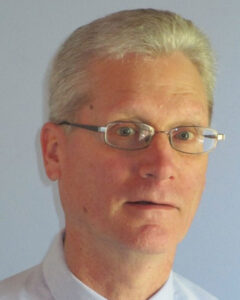But a “thick skin” is also vital, he said.
“Once you become an assistant professor, you realize that rejection becomes an everyday part of life. Your paper’s rejected, your grant’s rejected, and you have to be persistent and tough,” Dr. Robinson said. “Over time, you will have successful grants, and you will have successful papers.”
Checklist for Success
John Peyman, PhD, a subject matter expert at the National Institute of Allergy and Infectious Diseases (NIAID), said applicants must persuade reviewers that their project is both significant and feasible. “Expertise in basic science or clinical research does not guarantee that you will get a grant,” he said.

John Peyman
Dr. Peyman presented a checklist of 40 actions derived from discussions by peer reviewers of thousands of applications over many years. Addressing these items will give an application the best chance of success, he said.
In the “Significance” category, the checklist items include being sure a project has “important implications that expert reviewers in my field will understand” and that the research will not just confirm previous work in the field.
“Critically recapitulating the state of the art, including your own preliminary data, focuses the reviewers’ attention on reasons to do the study,” Dr. Peyman suggested.
To demonstrate “Innovation,” applicants need to assure reviewers the project will “move the field forward in a major way.” “A common criticism is that plans, if completed, would produce merely incremental progress in the field,” he said.
The “My Thinking and Writing” checklist section suggests making sure sentences are clear and strong, tailoring the writing to a specific study section’s scope and members, and incorporating constructive criticism to strengthen an application’s reasoning.
To demonstrate “Feasibility,” an applicant should make sure the proposed methods have been published, that a project isn’t over-ambitious and that they explain the feasibility of every aim of the project. If reviewers don’t understand the methods and resources the applicant has available, they might “ding you for lack of feasibility,” Dr. Peyman said.
Under “Strategy and Resources,” checklist items include making sure to list the expected results, explain how the methods will achieve robust and unbiased results and respond effectively to reviewer critiques.
The “Specific Aims” items include showing that each aim of a project will test a hypothesis based on the researcher’s preliminary data and assuring reviewers that each aim can be completed independent of the outcome of the other aims.


